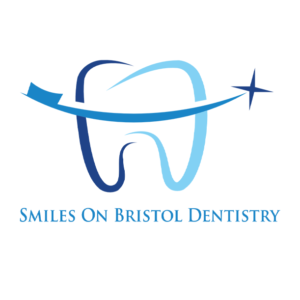Year after year you go to the dentist for checkups and cleanings, and while you probably know the various different steps in a general sense, Santa Ana dentists, Smiles on Bristol Dentistry, want you to be informed on what exactly goes on in your mouth and why.
First of all, regular dental checkups are important because they clean the teeth more thoroughly than most everyday brushing and flossing can accomplish. Dentists can remove the built up dental calculus and tartar that causes cavities and is too hard for people to tackle at home. Dental checkups are also important because they allow your dentist to assess your mouth for any issues such as cavities, gum disease, or the early stages of oral cancer. Dentists can spot issues before they become real problems and can offer preventative measures so the issues never develop into something more malignant.
When a person goes to a new dentist for the first time, they often receive a comprehensive exam rather than a typical dental exam. Dentists will also usually have their patients update their records with a comprehensive exam if there has been a long time since the last comprehensive exam. During one of these exams, dentists will examine the head and neck of the patient to check for irregularities or swelling in the lymph nodes. Swelling indicates an infection the dentist would need to address. They will then inspect the soft tissues of the mouth and upper throat, looking for inflammation, sores, or growths. After the soft tissues, the dentist will examine the patient’s gums looking for redness and irritation indicative of gum disease.
They will also measure gum pockets and check for any gum recession. Gum pockets refer to the amount of space between a tooth and the gum before it connects. The gum does not attach to the tooth at the very end. The tooth and gum are connected with ligaments. Sometimes these ligaments are weakened and broken down by the substances in a person’s mouth. When the ligaments break down, a pocket a space develops between the tooth and the gum. The deeper the pocket, the deeper plaque can reach the tooth and cause decay. Healthy gums have a little bit of a pocket. Dentists will use a small implement lined with markers to slide between the tooth and the gum. This will tell them whether the gum pocket is at a healthy level or if it has developed into an unhealthy size.
After those assessments, the dentist will look at the occlusion of the teeth which refers to how the upper teeth come together on top of the lower teeth to form the bite. The dentist may just make a visual observation, or they may have the patient bite on a piece of wax for a more detailed depiction of the occlusion.
The dentist will then perform a thorough examination of the teeth, checking for any issues. They will usually use a metal implement called an explorer to check for decay in the teeth. Parts of the tooth weakened by decay feel softer under the pressure of an explorer than healthy tooth. Dentists will also inspect any restorations of the teeth (crowns, fillings, bridges, etc.) to make sure they are all in good repair.
Lastly, for a comprehensive exam, dentists will have the patient undergo thorough x-rays of all parts of the mouth so the dentist has them on record. This reduces the amount patients will need follow-up x-rays, therefore reducing the amount of radiation they are exposed to.
For a regular dental exam, most of the procedures will be performed by a dental hygienist. The hygienist will start by removed the built up dental calculus with an ultrasonic instrument. This tool is used on the teeth, vibrating and breaking apart hardened tarter. It is best for removing larger pieces of tarter. For smaller pieces, the hygienist will often use what are called scalers and curettes. They are metal tools with hooked or looped ends than can be used to scrape off the remaining tarter. Each tooth is scaled one at a time to make sure no tarter is missed.
After using the scalers, hygienists will use a polisher to smooth the teeth. The polisher is similar to a spin-brush toothbrush, but instead of bristles at the end, there is a small rubber cup. The hygienist will fill the rubber cup with a paste made of fluoride and a lightly abrasive substance. As the polisher goes across the teeth, it rubs down bumps and imperfections leaving teeth smoother. This helps prevent plaque from having anywhere to attach onto the teeth. Flossing is usually done after the polishing is finished.
Hygienists will also check the mouth for areas of concern. They are not allowed to make diagnoses but they advise the dentist of any issues they spot so the dentist can make the proper diagnoses. Should a patient’s mouth require more than a physical and visual examination, dentists may have the hygienist take x-rays of the teeth to help the dentist make an accurate diagnosis. Most dentists such as the Smiles on Bristol Santa Ana Dentistry will not require x-rays every check-up to help limit the amount of radiation their patients are exposed to.
After the cleaning is complete, the dentist will then check on the patient. He or she will double check the cleanliness of the teeth, often times removing especially difficult pieces of tartar that the hygienists was unable to remove. The dentist will give a thorough examination of the mouth, gums, and teeth to check for issues. They will use the explorer tool to see if there is any noticeable tooth decay. After they complete a thorough exam, they will advise the patient of any issues that were found and treatment options available.


